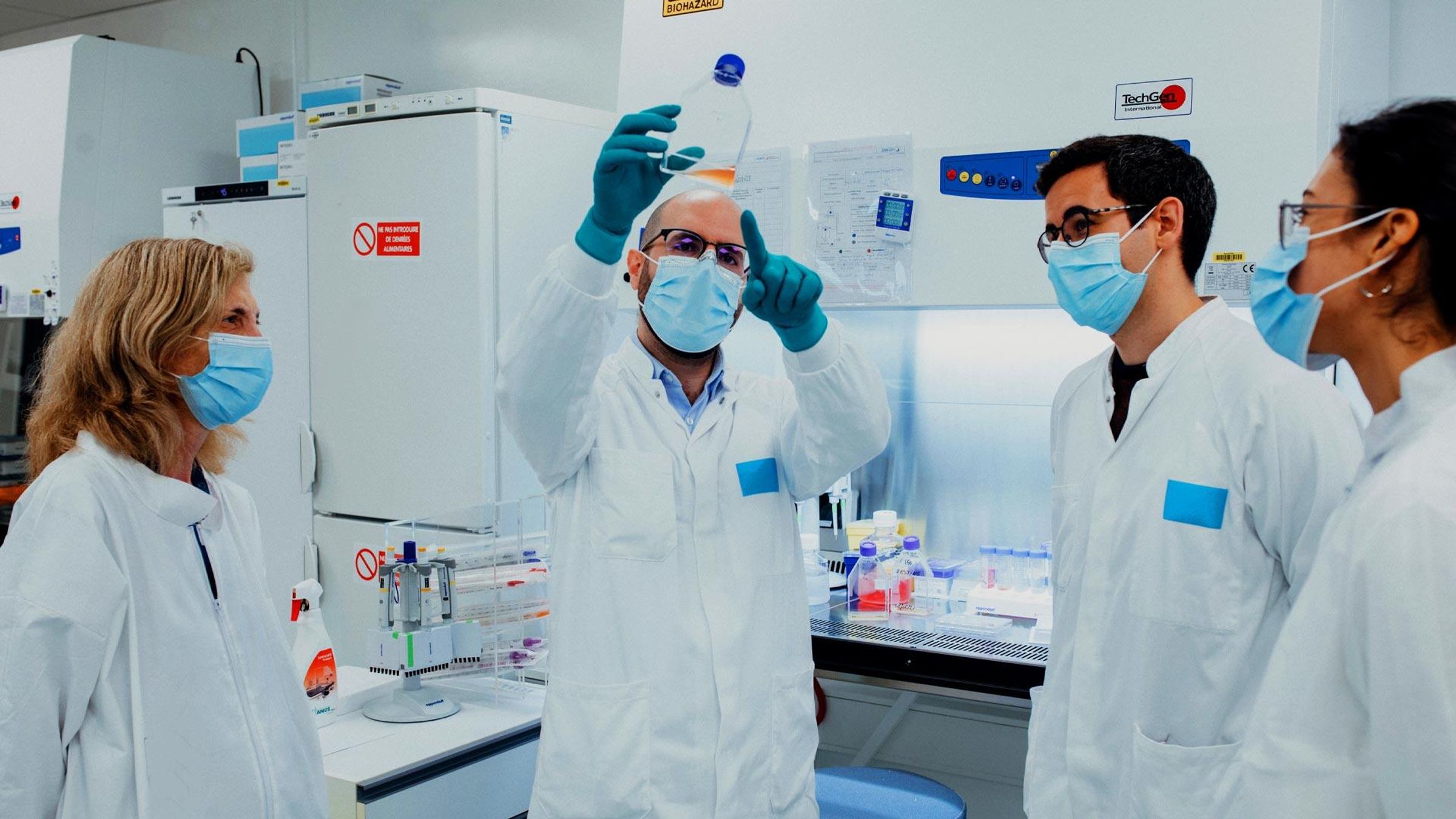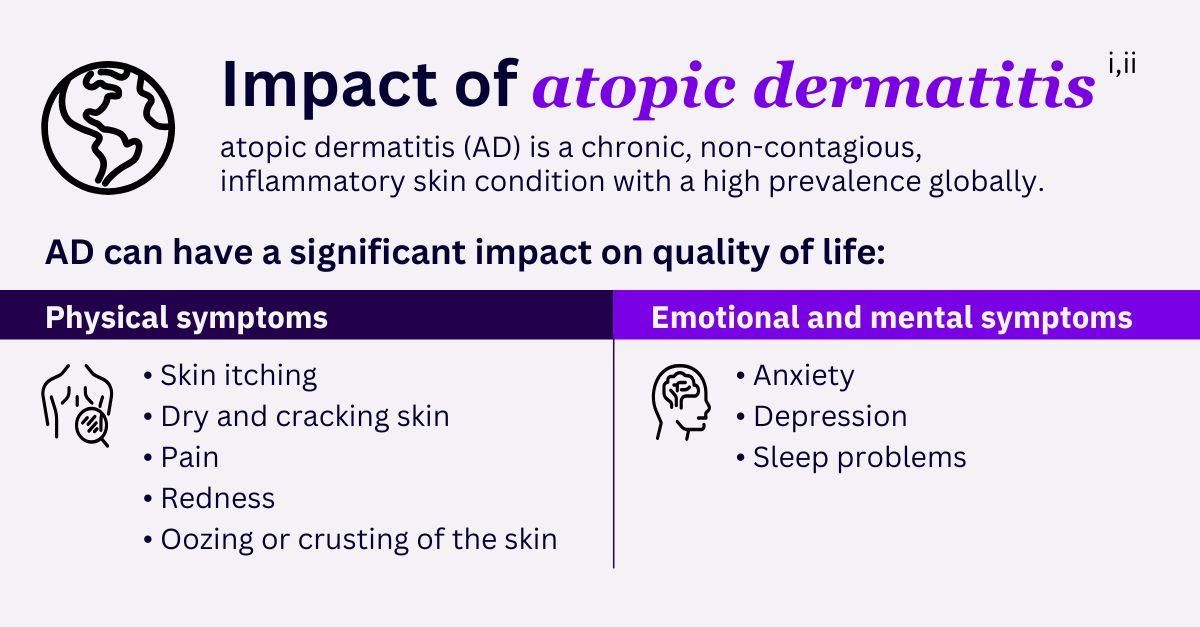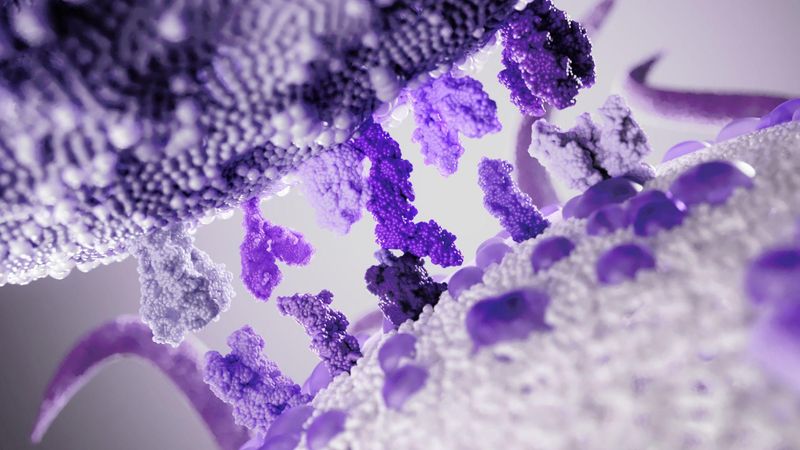Tackling Atopic Dermatitis From Multiple Angles

A conversation with two Sanofi physicians on a quest to bring new first and best-in-class medicines to people suffering from atopic dermatitis, including underrepresented patients with skin of color.
Trapped in One’s Own Skin
For Dr. Karl Yen, Global Project Head at Sanofi, atopic dermatitis (AD) is personal.
“As a pediatrician and a father to a child with AD, I’ve experienced first-hand the effect that this disease can have on both a patient and their family. Imagine having a full-body rash that won’t go away, not being able to sleep at night because of severe itching or waking up every morning with blood on your pajamas and sheets from scratching. It takes a real toll on your life.1”
When Carlos Peralta, VP, Global Head of Dermatology for Sanofi, started his career as a dermatologist, there was little he could do for the people who came to his office with the debilitating symptoms of AD. For decades, the mainstays of treatment remained skin moisturizers and topical steroids2; for both Drs Yen and Peralta, it was tremendously gratifying to join Sanofi’s quest for new therapies.

Transforming Care in Atopic Dermatitis
A lot has happened in the past few years to address unmet patient needs. There has been a major shift in scientific research toward understanding AD as a systemic, chronic inflammatory disease3.
“With the availability of new treatments, general awareness of AD has improved too, and patients found their voice to ask for effective treatments,” says Carlos. “This is incredibly motivating.”
Together with our partner, Regeneron, Sanofi brought the first biologic therapy for AD to the market, targeting IL-4 alpha receptors that play a role in the underlying immune response.
The Vision is Clear: To Change the Future of Immunology
Despite these significant advancements, unmet needs remain for people suffering from AD. As is the case with most chronic diseases, patients and physicians require a diverse toolkit of options for addressing their needs.
We’ve been dedicated to creating a robust pipeline of novel medicines with mechanisms of action that hit core immune pathways with the potential to have meaningful impact in a variety of diseases with the main goal of raising efficacy ceilings, intervening early in the disease and changing its course.
For AD, we are conducting phase 2 and phase 3 studies exploring a novel mechanism targeting OX40-Ligand, a nodal pathway in the inflammatory process, hypothesized to restore balance to the adaptive and innate immune system.
“Today, Sanofi researchers are looking beyond type 2 inflammation to discover new solutions for patients with mixed inflammatory responses. For example, my team is pursuing multiple programs targeting OX40-Ligand, a key immune mediator, as a target to potentially stop inflammation at its root,” says Karl.
An additional study for an IL-1 receptor–associated kinase 4 (IRAK4) is ongoing, with a IL13/TSLP NANOBODY® VHH study planned in AD.
But our contributions to AD care go beyond what happens in the labs. We have embarked on additional research on how AD disrupts the skin barrier, sleep patterns, and other determinants of health.5,6
Steadfast in our commitment to support diversity in clinical trials, we’re also prioritizing important research to better understand the unique considerations for patients with skin of color. Despite the fact AD is more prevalent – and often more severe – in Black and Hispanic populations, they are frequently underrepresented in AD clinical trials.7,8,9 Additionally, nuances involved in the visual appearance of AD can lead to dramatic underestimations of disease severity and negatively impact care as a result.
Through our research and using new innovative objective measures, we hope to deepen our understanding of the unique clinical features and mechanisms of disease progression specifically characterizing skin of color. We are gathering invaluable insights that can help the dermatology community better meet the specific needs of different patients.9
For Carlos, it’s this commitment to patient-centric care in AD that brings him to work each and every day. Since joining Sanofi, he's managed to stay in contact with some of his patients from two decades earlier, and see first-hand how the evolving treatment paradigm has translated to meaningful improvements in care, “Having treatment options available has been an important advancement for them,” says Carlos. “Our commitment to developing first and best-in-class medicines is dedicated to them.”
Find out More About Immunology and Inflammation Research

Redefining R&D: How Immunoscience is Driving the Pipeline of the Future

Improving Quality of Care in Atopic Dermatitis

Technology Platforms
References
- Eichenfield, Lawrence F., et al. Guidelines of care for the management of atopic dermatitis: section 1. Diagnosis and assessment of atopic dermatitis. J Am Acad Dermatol 70.2 (2014): 338-351.
- National Institutes of Health (NIH). Health Topics: Atopic Dermatitis. Available at: https://www.niams.nih.gov/health-topics/atopic-dermatitis. Last accessed August 2024.
- Zuberbier T et al. Patient perspectives on the management of atopic dermatitis. J Allergy Clin Immunol. 2006 Jul;118(1):226-32.
- Kaufman BP, Guttman-Yassky E, Alexis AF. Atopic dermatitis in diverse racial and ethnic groups-Variations in epidemiology, genetics, clinical presentation and treatment. Exp Dermatol. 2018 Apr;27(4):340-357.
- Chang YS, Chiang BL. Sleep disorders and atopic dermatitis: A 2-way street? J Allergy Clin Immunol. 2018 Oct;142(4):1033-1040.
- Schonmann Y, et al. Atopic Eczema in Adulthood and Risk of Depression and Anxiety: A Population-Based Cohort Study. J Allergy Clin Immunol Pract. 2020 Jan; 8(1): 248–257.e16
- Croce, Emily A. et al. Reframing racial and ethnic disparities in atopic dermatitis in Black and Latinx populations. J Allergy Clin Immunol. 2021 Nov; 1104 – 1111.
- Al-Obaydi S, Craig TJ, Al-Shaikhly T. Racial and ethnic disparities in the treatment of patients with atopic dermatitis in the United States: A retrospective matched cohort study. J Allergy Clin Immunol Pract. 2023 Aug;11(8):2602-2604.
- Jessica M, et al. Racial and ethnic underrepresentation in dermatology clinical trials. J Am Acad Dermatol. 89.2 (2023): 293-300.